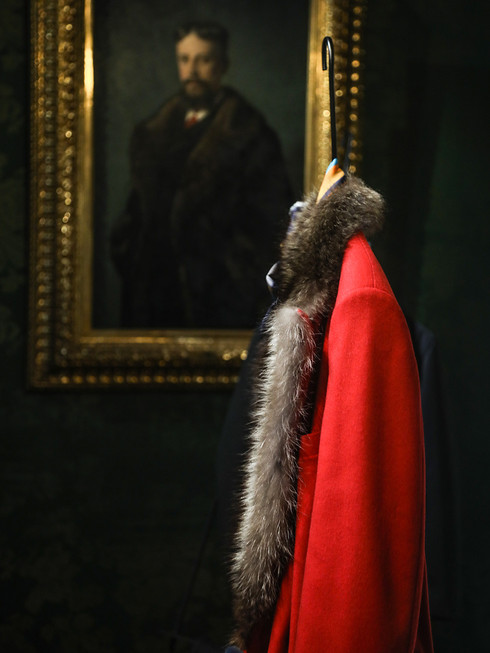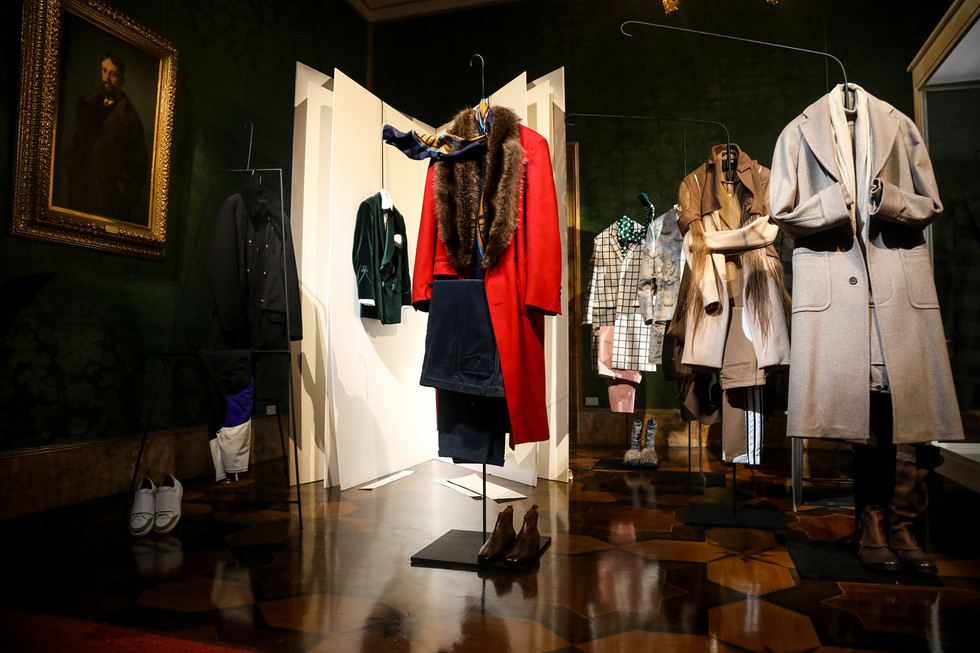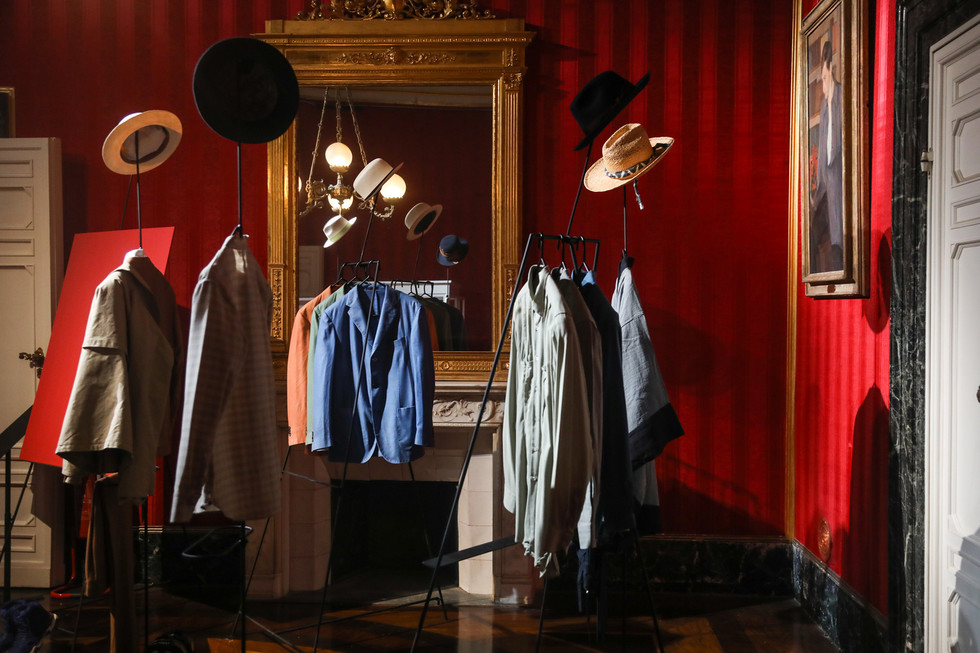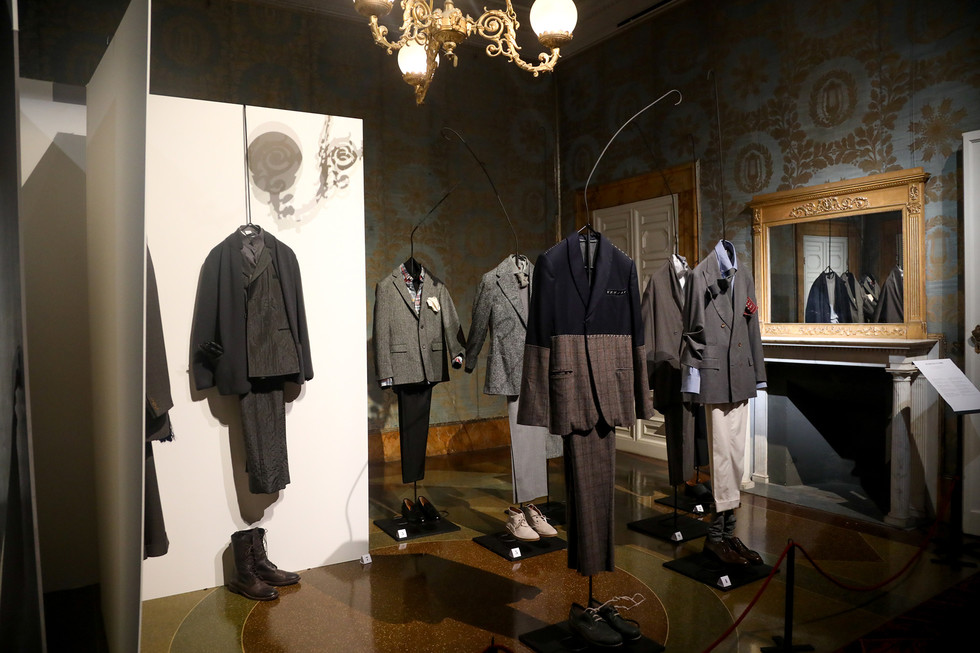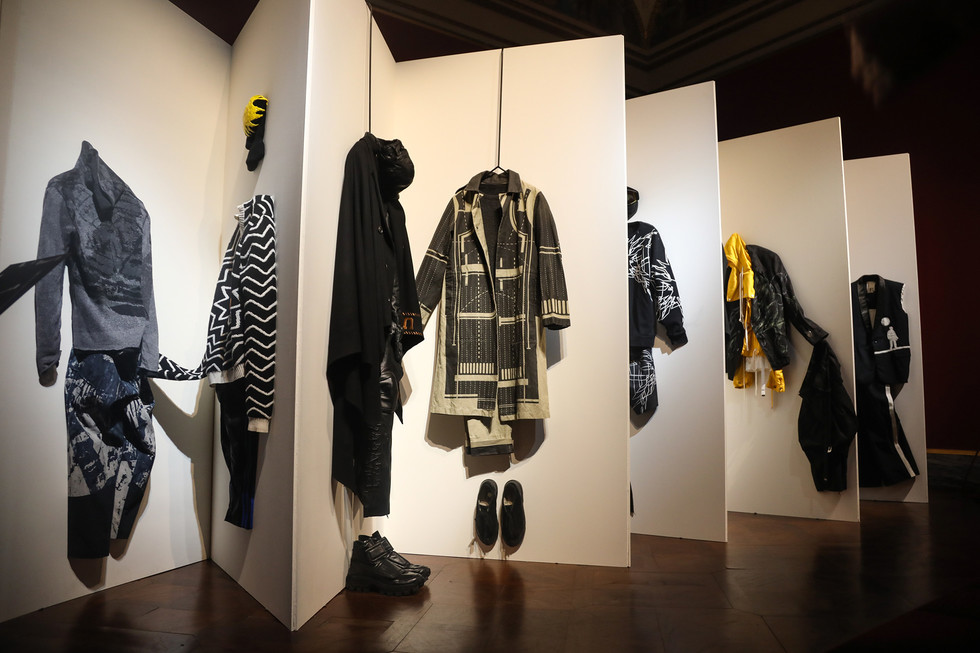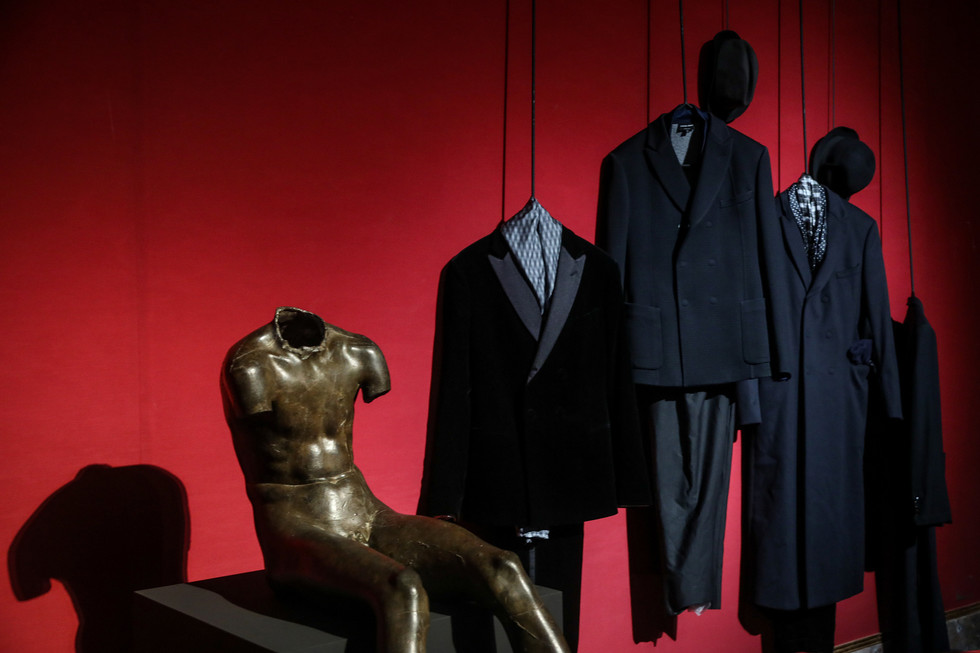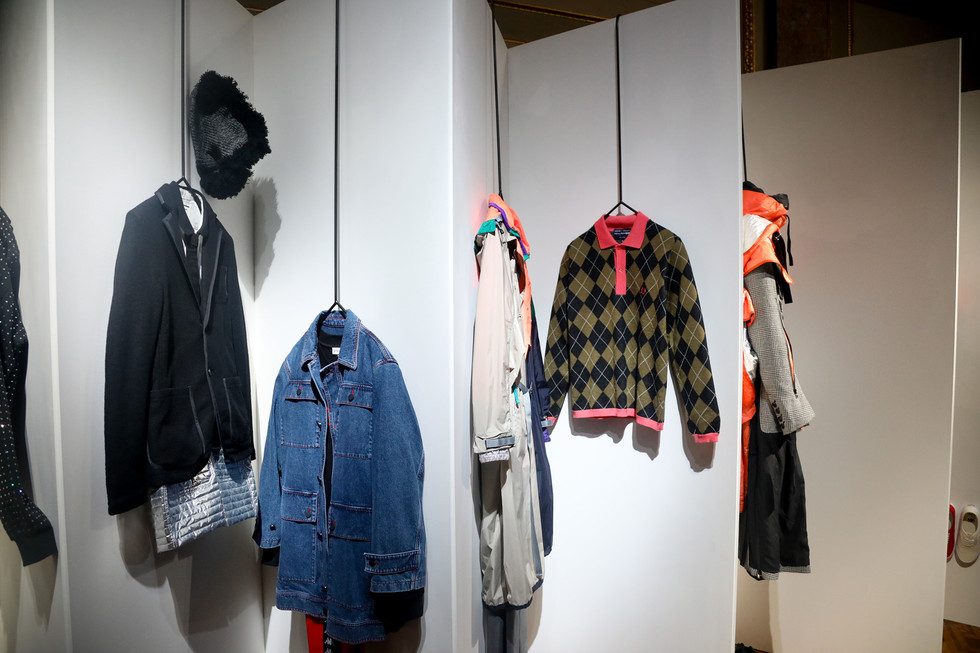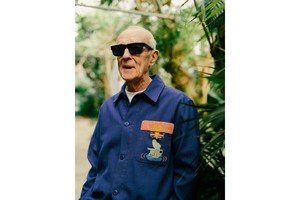Fashion Exhibition: A short novel on men’s fashion Museo della Moda e del Costume, Palazzo Pitt, Florence
Written by Philip Warkander by Meghan Scott“L’art est né des contraints.” With this quote by Stendahl, Olivier Saillard explains his view on menswear: For a man to care too much about his appearance is dangerous, as he then risks being seen as effeminate and thus losing his hegemonic position in society. If he cares too little, he is considered to be dirty, possibly too poor to buy new clothes when his old are worn out, and then he will be treated like an outcast. Most of menswear therefore takes place in a very confined space, constrained by societal norms on how a man should appear. But for Saillard, arguably the most interesting and innovative fashion curator in the world today, this is precisely what makes menswear so interesting: “I have been doing this work, of curating fashion, for more than 25 years now. In that time, I have probably curated about 150 exhibitions on women’s wear, but only three on menswear. It’s easy to do an exhibition on evening dresses and luxurious haute couture, but it says nothing about the wardrobe of the everyday, about how we actually encounter and engage with fashion in our daily lives. This is also why it’s challenging to curate menswear; it’s not so bold and extravagant as women’s wear. With this exhibition, I wanted to find the dream in a grey suit.”
Anyone interested in fashion knows Saillard’s name. Though soft-spoken and humble, he has for a long time defined our idea not only of what fashion has been in the past, but also what it has potential to become in the future. Through magazine articles, museum exhibitions and books, he has proposed a more poetic and whimsical approach to fashion. He is therefore widely considered to be one of the most influential voices in the industry today. His exhibitions are his way of proposing that we should make fashion more magical and explorative again, and that we should leave behind us the industry’s current obsession with Instagram-culture, athleisure and celebrities in expensive gowns posing on various red carpets.
It has for a long time been common practice to explore the link between fashion and art, but for this exhibition Saillard has chosen another path; to use fashion as illustrations to literature. In every room, he has placed large “books”, in which quotes from selected classics have been printed. The outfits are then used as illustrations to the quotes.
Fashion exhibitions at museums have throughout the years been criticized for presenting clothes as dead objects, the opposite of how they are used when hanging in our closets at home. In the museum, behind glass, they become lifeless, like ghosts. Reacting to this critique, Saillard has deliberately chosen to display the outfits on tall, metal valets, enlarged versions of the type of furniture otherwise rarely seen outside of people’s bedrooms.
The garments have not been selected randomly but represent the brands that have showcased their menswear collections at Pitti Uomo, beginning with Vivienne Westwood in 1990 and by now including names such as Raf Simons, Dries Van Noten, Valentino and Dolce & Gabbana. But, the exhibition is not only a reflection on Pitti Uomo but on what has happened in society at large during these past three decades. Saillard explains: “Interestingly, the pieces that were the most difficult to showcase were the sportswear garments. They have not aged well, and perhaps we need to revisit this look in a few decades from now, to assess it in a more accurate way. Instead, it is the suit, and in particular, the black suit, that intrigues me. This kind of garment looks almost the same from decade to decade. Contemporary menswear is based in an idea of masculinity that was formulated in the 1800s, and in many ways, this remains the same today. It is the same jacket, the same trousers, the same colour palette. For me, the effects are very clear: if we want a fashion industry that is sustainable, we should look to menswear. Here is the idea of a fashion that doesn’t go out of style, almost like a uniform. Of course, today we are less formal and instead more casual and I think perhaps that in the future, we should turn to work-wear for inspiration. Work-wear deserves more recognition. But this should happen in the existing tradition of menswear, finding a few pieces that already are classics.”
The exhibition ends in a room with only monochromatic, white outfits, spread out on white pages of a book. For Saillard, this symbols his vision of the future, where fashion is still a blank canvas, waiting for us to bring it to life.


